If you were to describe yourself as a piece of toast, what kind of toast would you be?
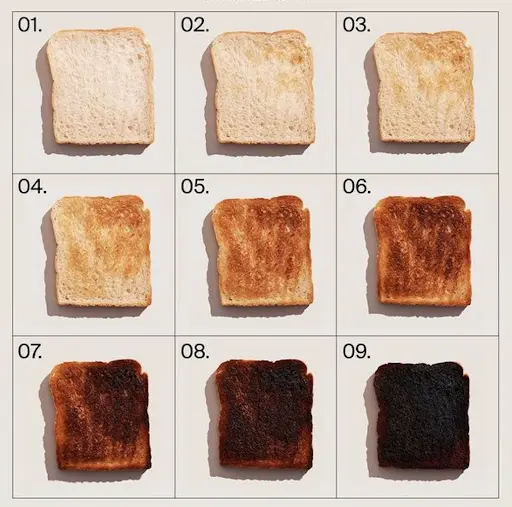
Recently, the term "Toastout" has gained popularity among emerging adults in South Korea. They liken themselves to toast because, although its exterior may appear golden and crispy before it becomes burnt, the inside is often already dry and hard. "Toastout" encapsulates the experience of feeling mentally and physically exhausted while still presenting an external appearance of well-being, a sentiment that resonates with many individuals.
South Korean netizens have even categorized "Toastout" into different types, such as "Lettuce Toast", which describes a state of lethargy akin to toast weighed down by limp lettuce.
This amusing metaphor of "Toastout" offers us valuable insight. Many of us have experienced times when we felt like a piece of toast, striving to carry on while appearing fine on the outside. However, if we do not find effective ways to relieve our stress, there is a risk that "Toastout" may develop into "Burnout".

What is "Burnout"?
Burnout is a state caused by chronic work stress that hasn't been effectively addressed, and its main characteristics include:
- A feeling of energy depletion or exhaustion
- Increased psychological distance from work, accompanied by negative and cynical feelings towards it
- A lack of sense of achievement and efficacy
While "Burnout" is often associated with the workplace, it is important to recognize that sources of stress come from various areas - whether they stem from work, studies, family, relationships, finances, or a sense of meaning and accomplishment. These stresses tug at our thoughts day after day.
According to the American Psychological Association's 2023 Stress in America survey, among respondents aged 18 to 34, 67% indicated that stress made it hard for them to focus. Additionally, 58% agreed that on most days, their stress completely overwhelms them, while nearly half stated they are so stressed that they can't function.
In our fast-paced lives, we wake up to a busy routine, with little pressures and emotions quietly accumulating. But is stress entirely a bad thing? Without it, would we lose our motivation to take action?
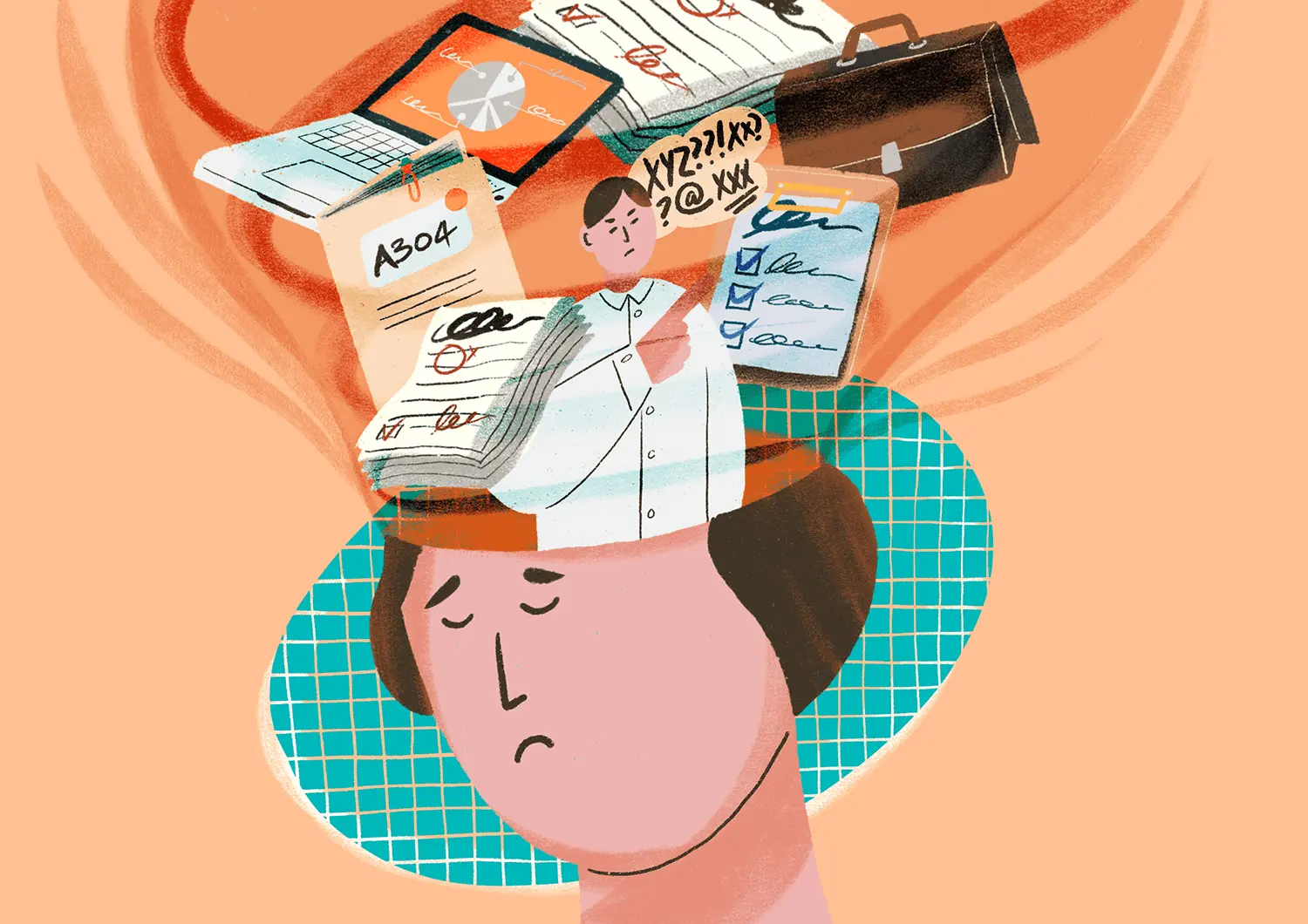
The Meaning of Stress: How It Affects Our Bodies
When stress arises, it often triggers the body's "fight or flight" response. This reaction originates from our survival mechanism, leading to a series of hormonal and physiological changes that once helped our ancestors escape threats from predators like wolves and venomous snakes.
In modern times, when we perceive a threat, feel overwhelmed, or even fear embarrassment, it activates a signaling pathway known as the HPA axis (hypothalamic-pituitary-adrenal axis), releasing stress hormones such as cortisol and epinephrine. These hormones circulate through the bloodstream, causing various physical reactions, including an increased heart rate to enhance oxygen circulation and heightened energy availability for the brain. Such responses enable us to react effectively to different situations; for instance, the pressure from an upcoming exam can be one of the strongest motivators for studying.
While stress can drive us to take action, the key concern arises when these stress responses are triggered too frequently or for extended periods. The HPA axis begins to adapt and can remain activated over the long term, continually releasing stress hormones. This can lead to a range of health issues, such as insomnia, brain fog, digestive problems, and even heart disease.
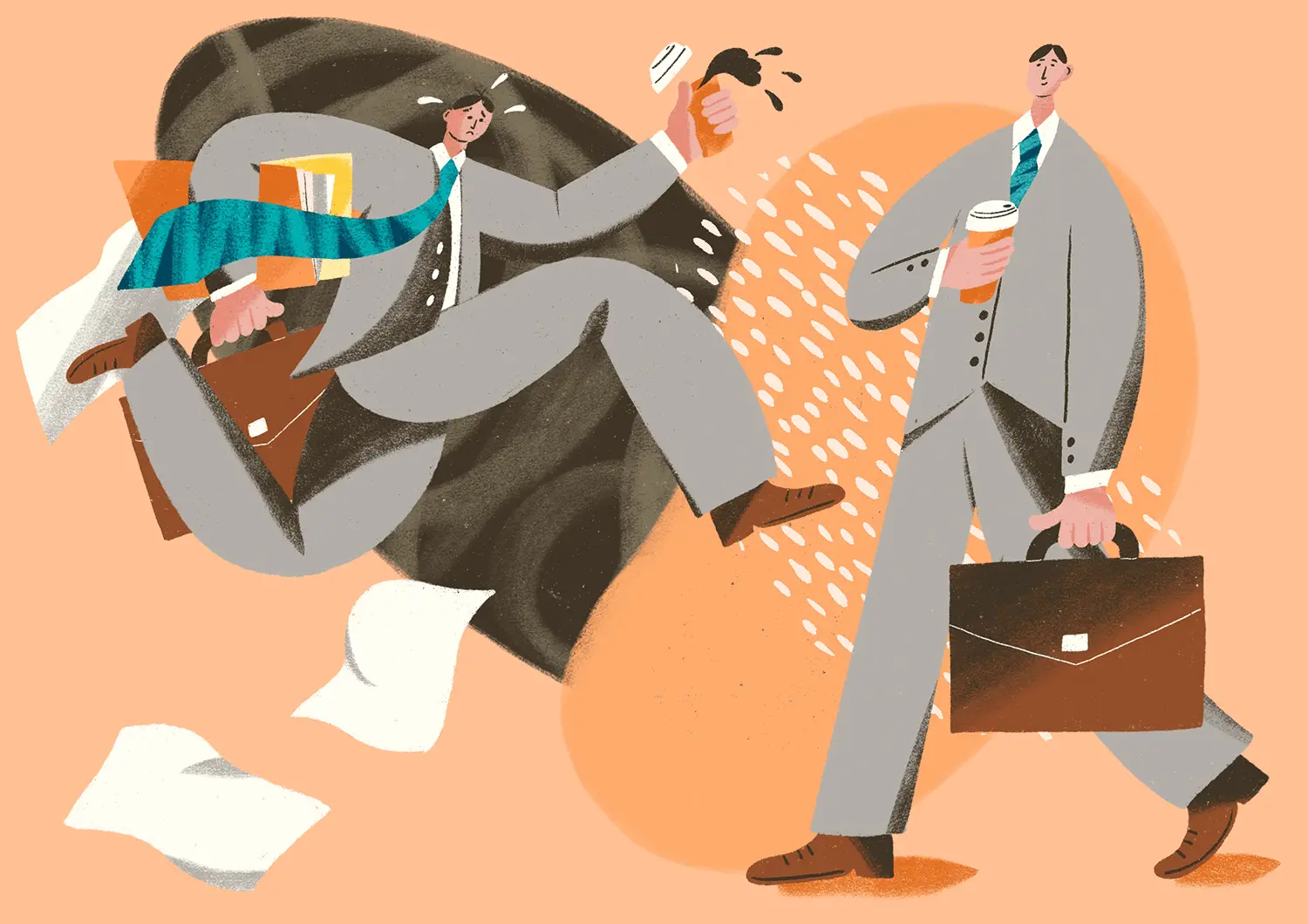
How Much Stress is Too Much?
Everyone experiences and responds to stress differently. Various factors, such as genetics, environment, and age, can influence how our bodies react to stress. When faced with chronic stress, our body, emotions, and behavior send signals indicating the presence of pressure. For instance, physical symptoms may include muscle tension, pain, gastrointestinal discomfort, and skin allergies. Emotionally, one might become easily anxious, irritable, angry, or persistently downcast. Behaviorally, signs can manifest as restlessness, decreased memory function, and social avoidance.
Observing and acknowledging our own state is the first step in addressing toastout and burnout. By incorporating effective stress management and self-care techniques, we can navigate stressful situations more effectively.
Scholar Kandi Wiens, who studies burnout, shares strategies for coping with burnout in the Harvard Business Review:
- Observing practices that help maintain vitality under stress: Make an inventory of the practices that enabled you to maintain vitality under stress. Consider the simplest methods, such as ensuring sufficient sleep, maintaining a balanced diet, and engaging in regular exercise. Setting aside time and space to relax before important meetings, as well as connecting with trusted individuals for support, can provide both energy and emotional backing. Exercise promotes the production of new neurons, enhancing the brain's resilience to stress. Additionally, spending time with friends and loved ones can increase oxytocin levels, helping to alleviate stress.
- Using emotional regulation strategies: Engaging in regular emotional regulation exercises allows us to observe our thoughts and emotions openly. When faced with high-pressure situations or intense emotions, these practices can help us manage our stress responses. Mindfulness exercises or journaling can also aid in reevaluating our beliefs about work and deepen our understanding of our thoughts and feelings.
- Prioritizing work recovery and make it a habit: Research indicates that we need to regularly disconnect completely from work in order to truly relax, recharge, and recover from work-related stress. It is important to consciously break the cycle of stress to prevent burnout. For example, incorporating short "micro-breaks" during work, like taking 5-10 minutes to walk, having a social chat, or stretching can be beneficial.

When Stress Arises from Practical or Hypothetical Worries
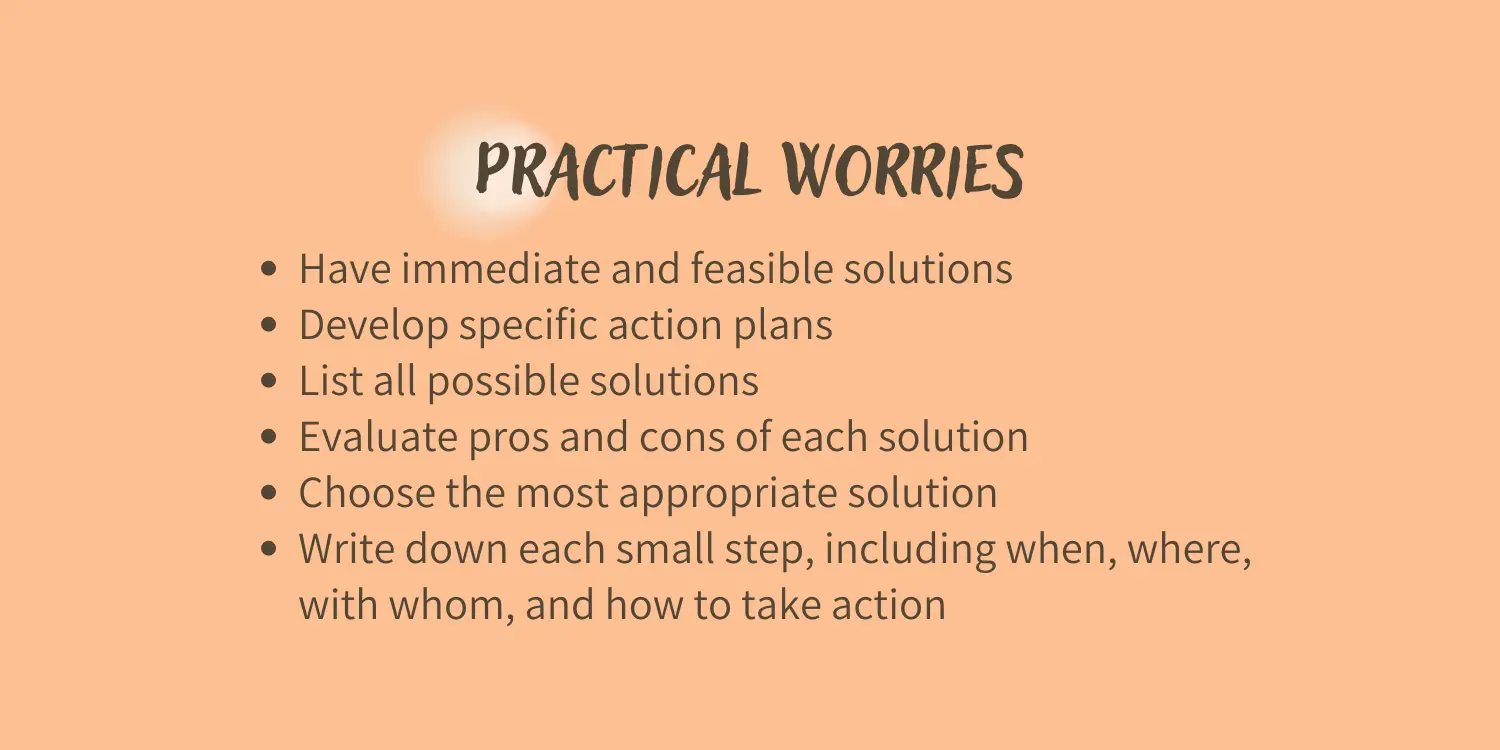
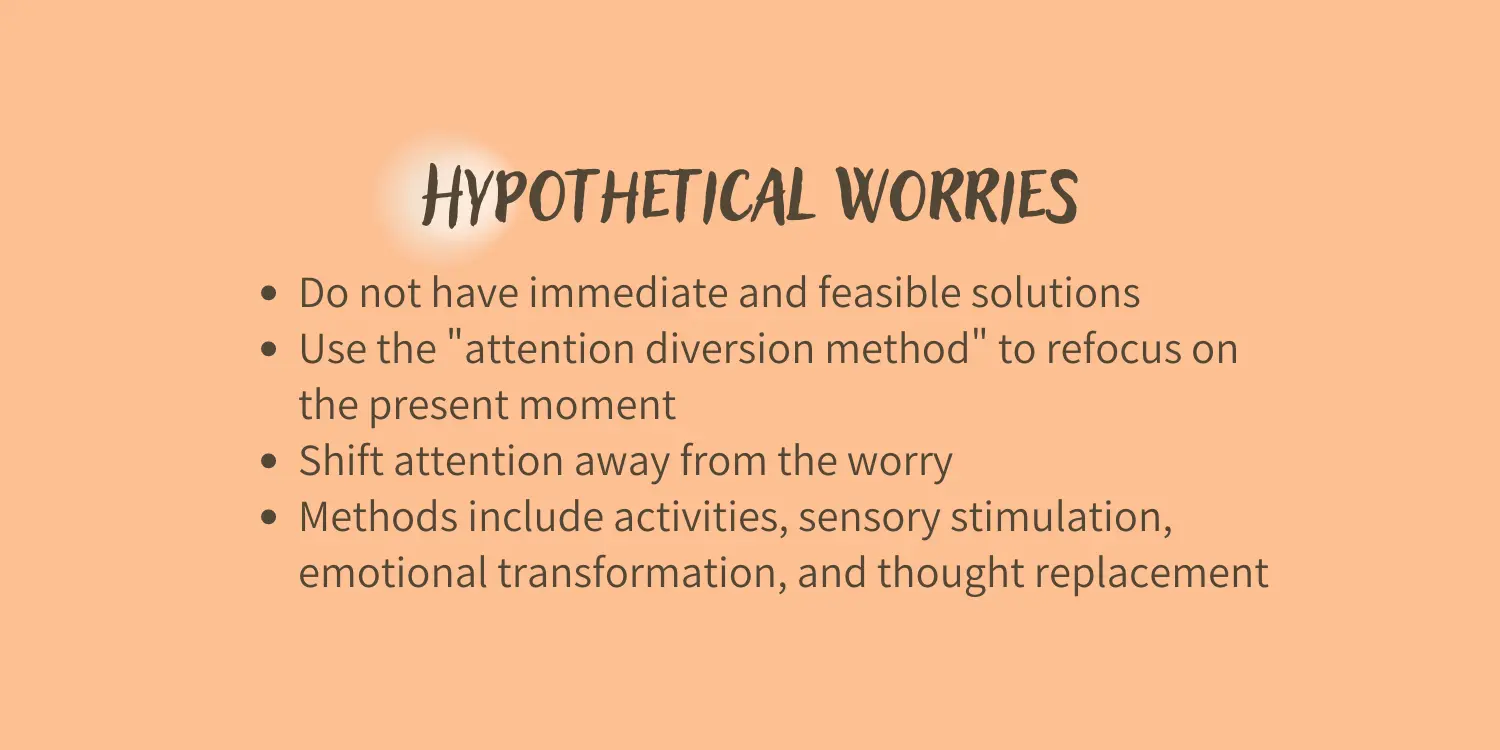
If concerns frequently linger in your mind and impact your daily life, consider keeping a record of these worries and organizing them to distinguish between "practical worries" and "hypothetical worries". Once you have categorized these concerns, you can choose appropriate strategies to address them.
If your worries fall under "practical worries", you can use the "7 Steps of Problem-Solving" to create actionable steps to address those concerns. If your worries are categorized as "hypothetical worries," you can practice "Worry Time", where you schedule a specific time each day to reflect on your concerns in a controlled and rational manner. This helps to prevent worries from occupying too much of daily life.
Alternatively, you can use "Attention Shifting", which involve various methods such as emotional shifting (e.g. listening to upbeat music), thought shifting (e.g. counting the number of circular objects in the room), or sensory stimulation (e.g. holding a can of cold soda) to refocus on the present moment.
"We cannot prevent birds from flying overhead, but we can stop them from nesting in our hair". Similarly, while we cannot stop stress from arising, we can choose whether to let it linger in our minds. By observing and accepting our state, granting ourselves time for emotional regulation and recovery, we can gently coexist with stress and avoid being drained by burnout.
References:
World Health Organization. (2025). ICD-11 for mortality and morbidity statistics. https://icd.who.int/browse/2025-01/mms/en#129180281
American Psychological Association. (2023). Stress in America: A nation recovering from collective trauma. https://www.apa.org/news/press/releases/stress/2023/collective-trauma-recovery
Kandi Wiens. (2024). How Burnout Became Normal — and How to Push Back Against It. Harvard Business Review. https://hbr.org/2024/04/how-burnout-became-normal-and-how-to-push-back-against-it
Sonnentag, S., Cheng, B. H., & Parker, S. L. (2022). Recovery from work: Advancing the field toward the future. Annual Review of Organizational Psychology and Organizational Behavior, 9, 33–60. https://doi.org/10.1146/annurev-orgpsych-012420-091355

